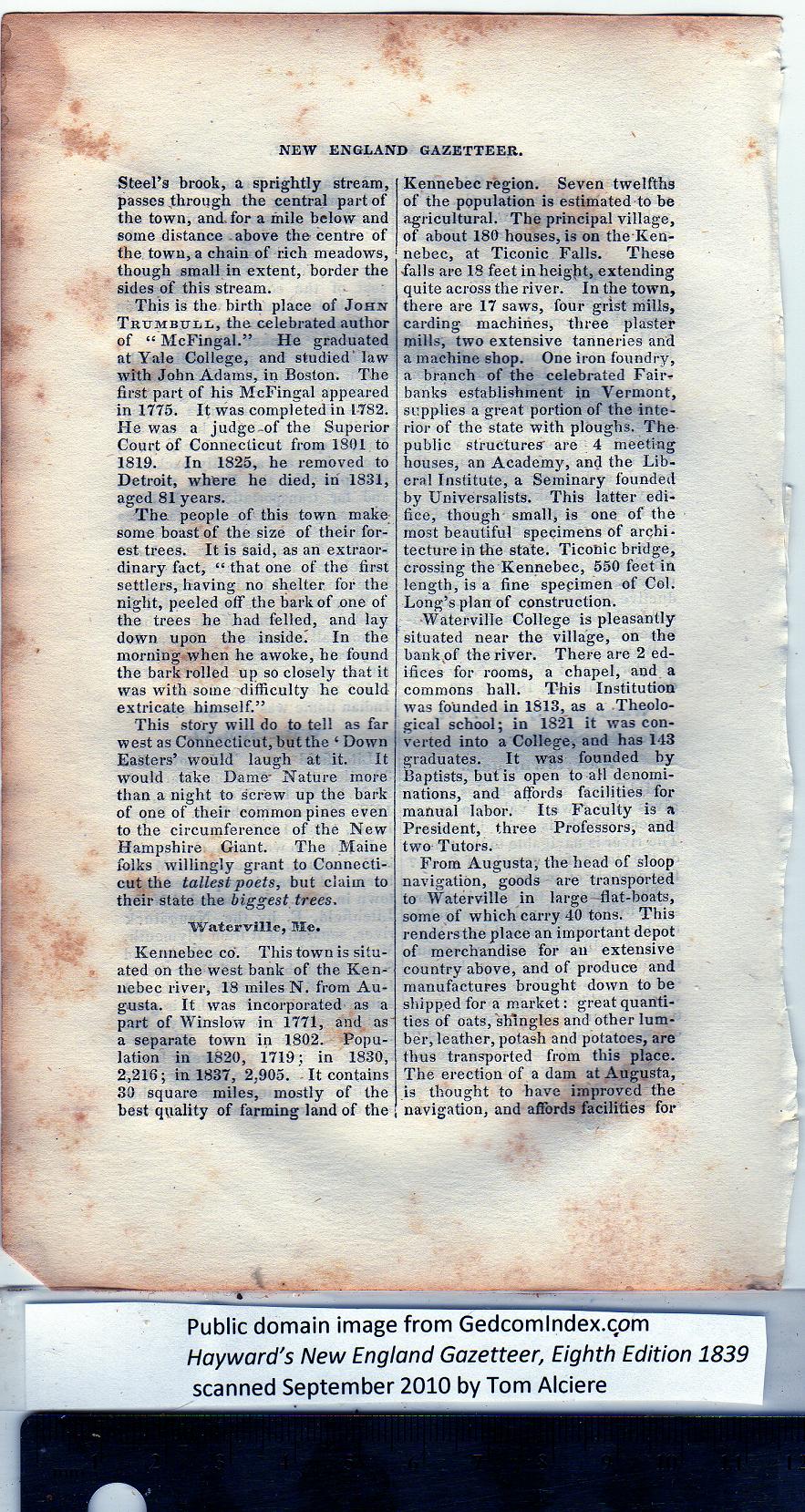|
NEW ENGLAND GAZETTEER.
Kennebec region. Seven twelfths
of the population is estimated to be
agricultural. The principal village,
of about 180 houses, is on theKen-
nebec, at Ticonic Falls. These
■falls are 18 feet in height, extending
quite across the river. In the town,
there are 17 saws, four grist mills,
carding machines, three plaster
mills, two extensive tanneries and
a machine shop. One iron foundry,
a branch of the celebrated Fair*
banks establishment in Vermont,
supplies a great portion of the inte-
rior of the state with ploughs. The
public structures' are 4 meeting
bouses, an Academy, and the Lib-
eral Institute, a Seminary founded
by Universalists. This latter edi-
fice, though small, is one of the
most beautiful specimens of archi-
tecture in the state. Ticonic bridge,
crossing the Kennebec, 550 feet in
length, is a fine specimen of Col.
Long’s plan of construction.
Waterville College is pleasantly
situated near the village, on the
bankpf the river. There are 2 ed-
ifices for rooms, a chapel, and a
commons hall. This Institution
was founded in 1SI3, as a Theolo-
r gical school; in 1821 it was con-
verted into a College, and has 143
graduates. It was founded hy
Baptists, but is open to all denomi-
nations, and affords facilities for
manual labor. Its Faculty is a
President, three Professors, and
two Tutors.
Steel’s brook, a sprightly stream,
passes .through the central part of
the town, and, for a mile below and
some distance above the centre of
the town, a chain of rich meadows,
though small in extent, border the
sides of this stream.
This is the hirth place of John
Trumbull, the celebrated author
of “ McFingal.” He graduated
at Yale College, and studied' law
with John Adams, in Boston. The
first part of his McFingal appeared
in 1775. It was completed in 1782.
He was a judge-of the Superior
Court of Connecticut from 1801 to
1819. In 1825, he removed to
Detroit, where he died, in 1831,
aged 81 years.
The. people of this town make
some boast of the size of their for-
est trees. It is said, as an extraor-
dinary fact, “ that one of the first
settlers, having no shelter for the
night, peeled off the bark of one of
the trees he had felled, and lay
down upon the insidel In the
morning when he awoke, he found
the bark rolled up so closely that it
was with some difficulty he could
extricate himself.”
This story will do to tell as far *
west as Connecticut, but the i Down
Easters’ would laugh at it. It
would take Dame* Nature more
than a night to screw up tbe bark
of one of their common pines even
to the circumference of the New
Hampshire Giant. The Maine
folks willingly grant to Connecti-
cut the tallest poets, but claim to
their state the biggest trees.
Waterville, Me.
Kennebec co. This town is situ-
ated on the west bank of the Ken-
nebec river, 18 miles N. from Au-
gusta. It was incorporated as a
part of Winslow in 1771, and as'
a separate town in 1802. Popu-
lation in 1820, 1719; in 1830,
2,216; in 1837, 2.905. It contains
30 square miles, mostly of the
best quality of farming land of the
From Augusta, the head of sloop
navigation, goods are transported
to Waterville in large flat-boats,
some of which carry 40 tons. This
renders the place an important depot
of merchandise for an extensive
country above, and of produce and
manufactures brought down to be
shipped for a market: great quanti-
ties of oats, shingles and other lum-
ber, leather, potash and potatoes, are
thus transported from this place.
The erection of a dam at Augusta,
13 thought to have improved the
navigation, and affords facilities for
PREVIOUS PAGE ... NEXT PAGE
This page was written in HTML using a program written in Python 3.2 and image-to-HTML text generated by ABBYY FineReader 11, Professional Edition.
|
